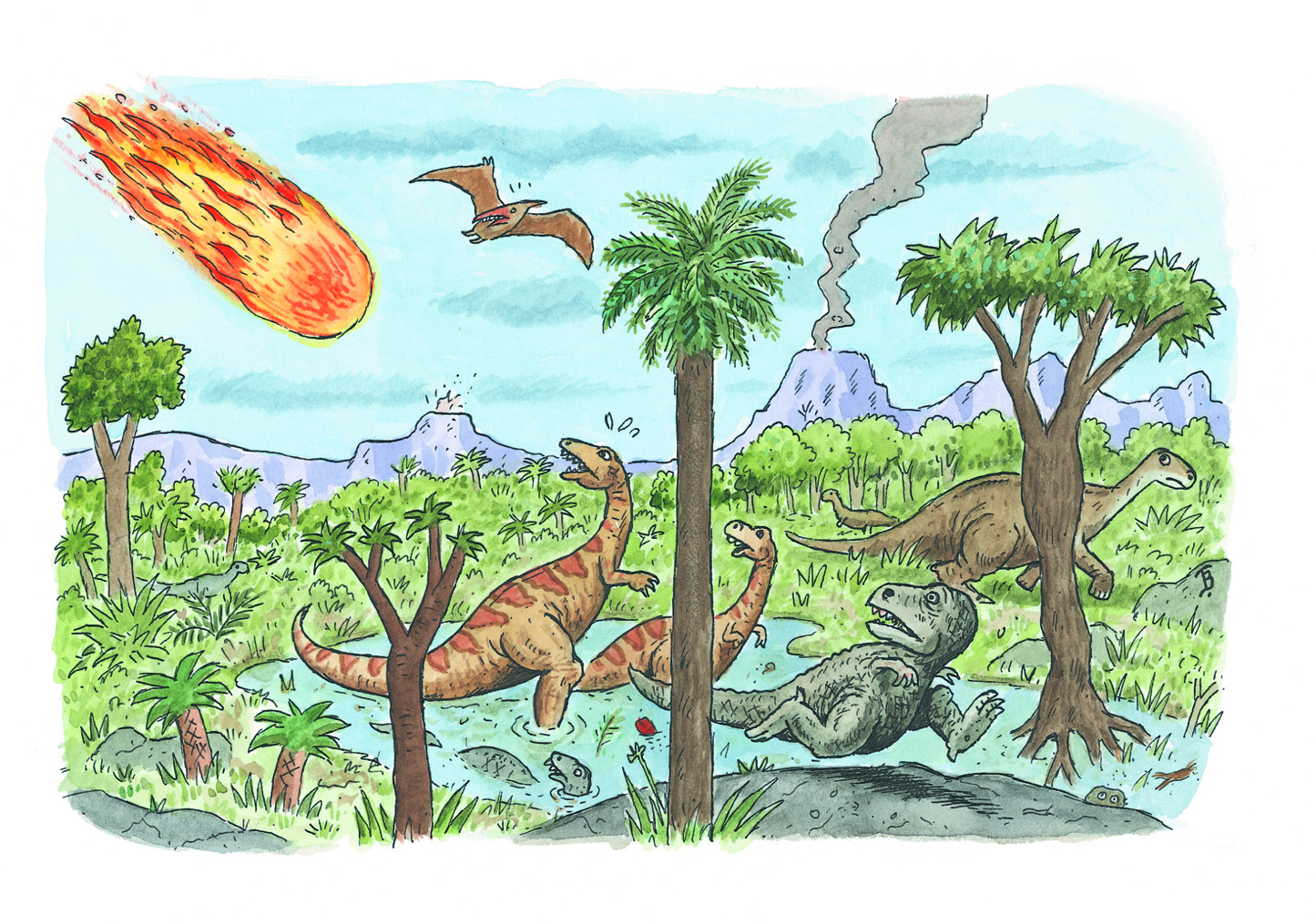
Overview
In this section you will find materials that support the implementation of EarthComm, Section 6: Impact Events and The Earth System.
Learning Outcomes
- Use mathematics to explain the energy released when asteroids or comets collide with Earth.
- Use computational thinking to compare impact events.
- Obtain information about the probability and effects of asteroid, comet, and meteorite collisions with Earth.
Inquiring Further
- To learn more about impact craters on objects other than Earth, visit the following web sites:
Asteroids and Early Earth History, Exploratorium Magazine Online
Read a little more about how impact craters form and what they reveal.
Finding Impact Craters, NASA
Lesson on finding impact craters on Earth and the moon.
Impact Craters on the Planets, Lunar and Planetary Institute
Check out images of impact craters on Mercury, Venus, the Moon, Jupiter's moon, Ganymede, Saturn's moon, Dione, and Uranus' moon, Miranda.
- To learn more about how scientists map Earth-approaching asteroids, visit the following web sites:
Questions and Answers Regarding Near-Earth Asteroids, Jet Propulsion Laboratory
Get some facts about whether asteroids are a risk to people on Earth.
Relative Positions Of Asteroids Near Earth
Check out this map showing asteroids near Earth.
- To learn more about Barringer Crater, visit the following web sites:
Barringer Crater (Meteor Crater)
Learn more about how the Barringer Crater came to be recognized as a meteor impact crater.
Eugene Shoemaker, Jet Propulsion Laboratory
Read a short bibliography about the scientist, Eugene Shoemaker, who made such a significant impact to the study of impact craters.
Resources
To learn more about this topic, visit the following web sites:
Asteroids
Asteroid Fact Sheet, National Space Science Data Center at Goddard Space Flight Center
Check out a list of numerous asteroids with a data set for each.
What Are Asteroids? National Space Science Data Center at Goddard Space Flight Center
Read a detailed description of asteroids, the different types of asteroids, and where asteroids are located in the solar system.
Comets
Comet Fact Sheet, National Space Science Data Center at Goddard Space Flight Center
Check out this list of numerous comets with a data set for each.
Meteoroids, Meteors, and Meteorites
Frequently Asked Questions About Meteors and Meteorites, American Meteor Society
Curious to know answers to some commonly asked questions? If you don't understand the answer given, they invite you to contact them for clarification.
Division of Meteorites, National Museum of Natural History - Smithsonian
What is a meteorite? How do you recognize a meteorite if you have one? Find out the answers to these questions plus get information about additional resources.
To see more images of Asteroid Ida and her moon, visit the following web site:
Asteroids, National Space Science Data Center Photo Gallery
See images of several different asteroids, including Ida and its moon, Dactyl.
To see more images of Halley's Comet, visit the following web sites:
Giotto Mission Page, National Space Science Data Center Photo Gallery
See images of Halley's Comet taken by Giotto when the comet last past Earth in the 1980s.
Comets, National Space Science Data Center Photo Gallery
See some images of several different comets, including Halley.
Animations and Video
To view animations and video related to this topic, visit the following web site:
Our World: Stardust, NASA
Locate and watch the NASA eClip titled, "Our World: Stardust." This video examines meteorites and comets.
